
3 minute read
Chinese Scientists Tag Blue Sharks in the Tropical Central and Western Pacific
Region Update: Asia

Chinese Scientists Tag Blue Sharks in the Tropical Central and Western Pacific
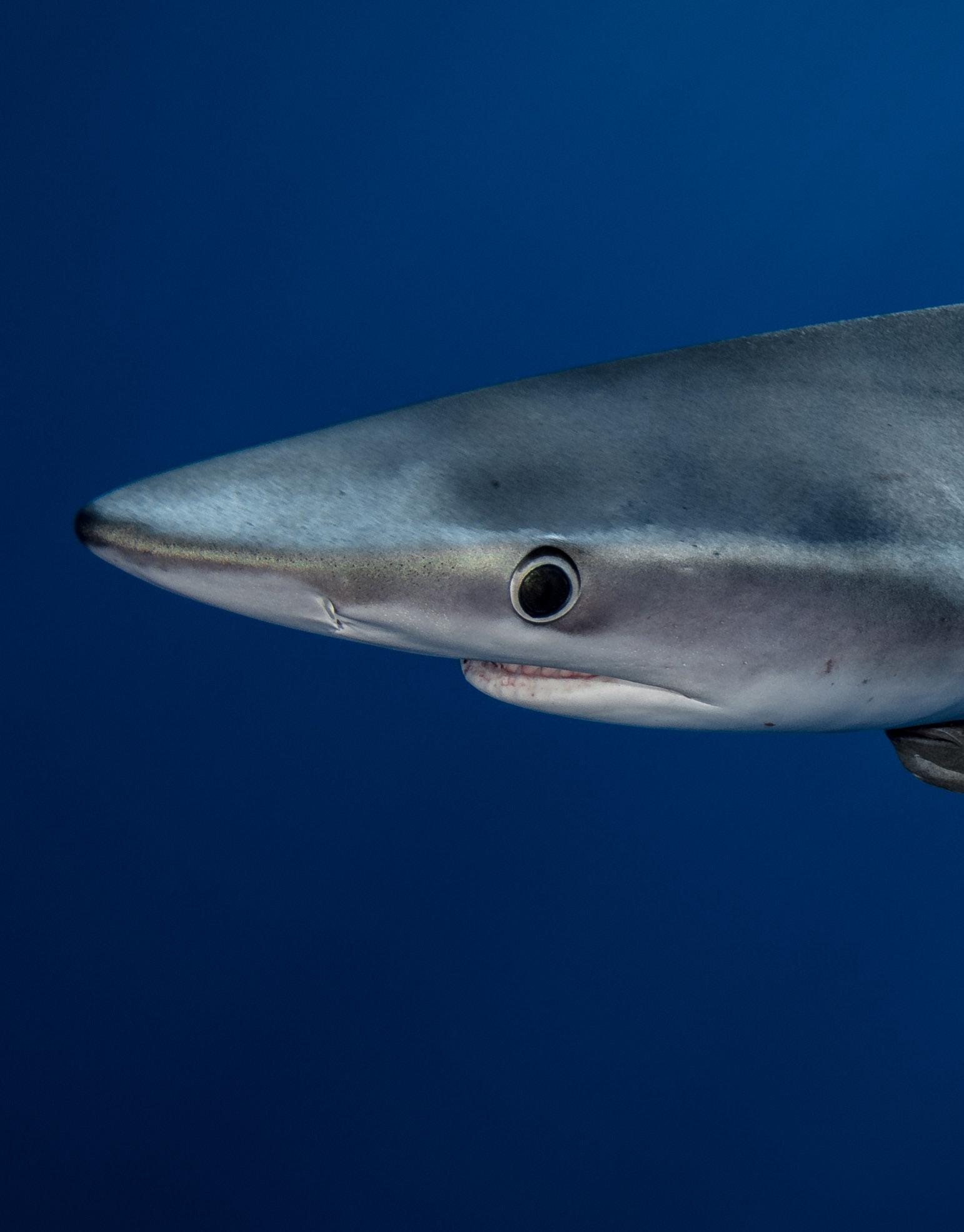
Written by Dr Yunkai Li ykli@shou.edu.cn College of Marine Sciences, Shanghai Ocean University

Photo by Hannes Klostermann Ocean Image Bank | theoceanagency.org
Blue Sharks ( Prionace glauca ) are large-bodied, highly migratory species in temperate and subtropical waters. Due to high longline bycatch and mortality rates, their populations have declined globally. Blue Sharks are listed as Near Threatened on the International Union for Conservation of Nature (IUCN) Red List of Threatened Species™ and were listed on Appendix II of the Convention on International Trade in Endangered Species of Wild Fauna and Flora (CITES) in 2022. Satellite tracking can provide valuable information on habitat occupancy, residency times, migration paths, and behavioural data, such as temperature preferences and swimming depth. This information is useful for refining catchability estimates and understanding shark behaviour, which is crucial for conservation efforts. However, little research has been done on the movement of Blue Sharks in the Tropical Central and Western Pacific through satellite tagging studies.
With financing and support from the Ministry of Agriculture and Rural Affairs of China, the College of Marine Sciences, Shanghai Ocean University, provided strong technical support for starting and developing China's pelagic fisheries. Recently, Professor Yunkai Li and his team members (Dr Jiangfeng Zhu, Dr Yi Gong, DDrFeng Wu, DDrCheng Zhou and DrDriaojie Dai), scientists who focus on the trophic ecology of oceanic squids and sharks, conducted a survey on the spatiotemporal movement of Blue Sharks in the Tropical Central and Western Pacific. In this survey, five adult Blue Sharks were tagged, and their satellite coordinates were transmitted to better understand their migratory routes and residency patterns and evaluate the post-release mortality from bycatch. This study is significant as it is the first time Chinese scientists have tagged pelagic sharks in this area. The study results have shown a high degree of variation in the migration patterns of these animals. They were found to spend most of their time in waters less than 250 m deep, with a maximum recorded depth of 665 m. The species was found to be thermally sensitive and exhibited a strong preference for warm waters above 22°C in the surface mixed layer. Still, it was also able to tolerate colder waters down to 5.5°C. These findings provide new insights into the movement ecology of Blue Sharks and will make important contributions to the conservation of pelagic sharks in the open ocean.
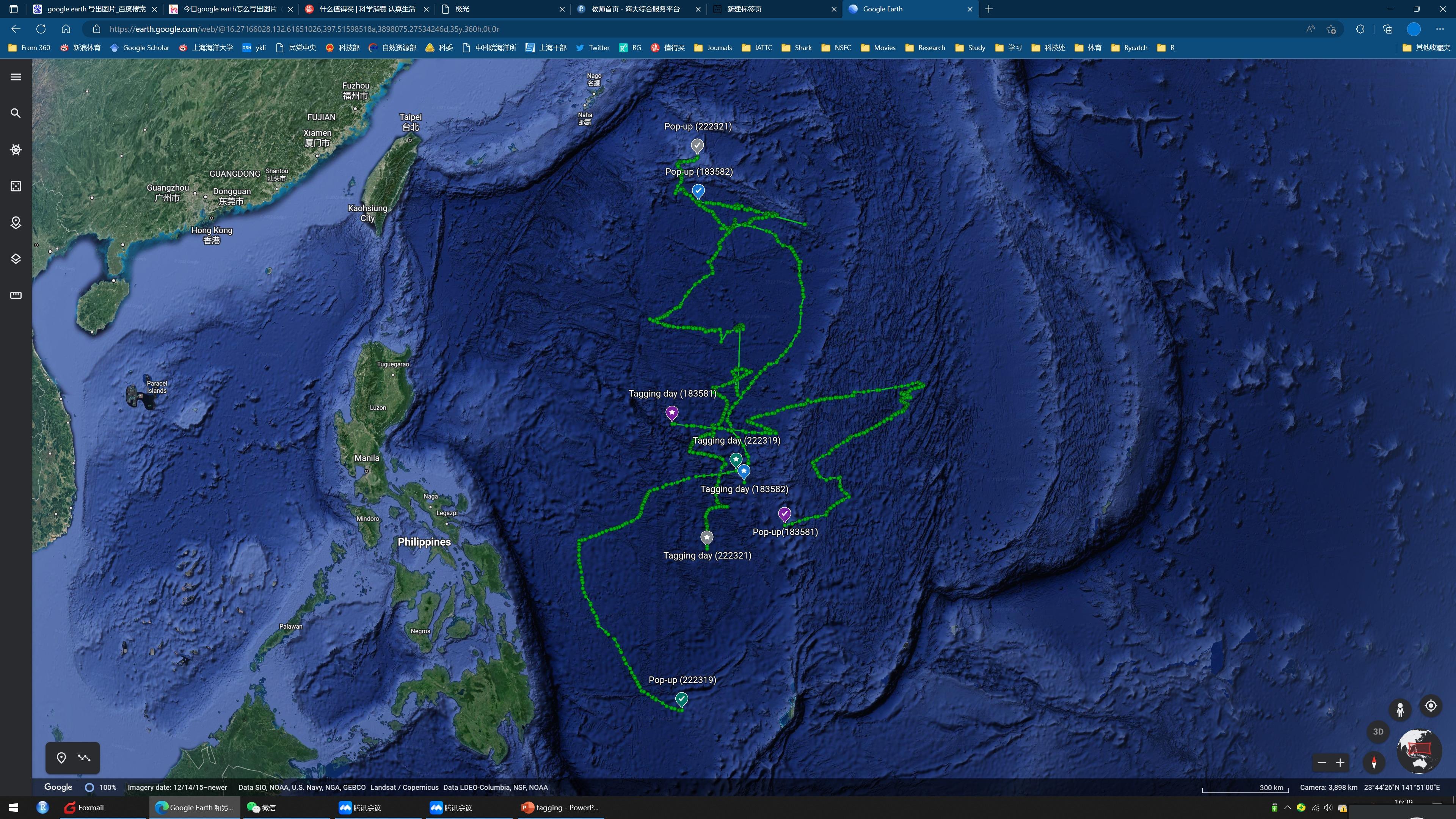
Researchers from the Shark Research Group at Shanghai Ocean University attaching the satellite tracking tags to or near the dorsal fin of Blue Sharks caught in the Western Pacific.
Reconstructed tracks for mini-PAT for Blue Shark
Percent records for depth strata of 4 individuals (left). Percentage of time spent in individual temperature strata diving activities (right).
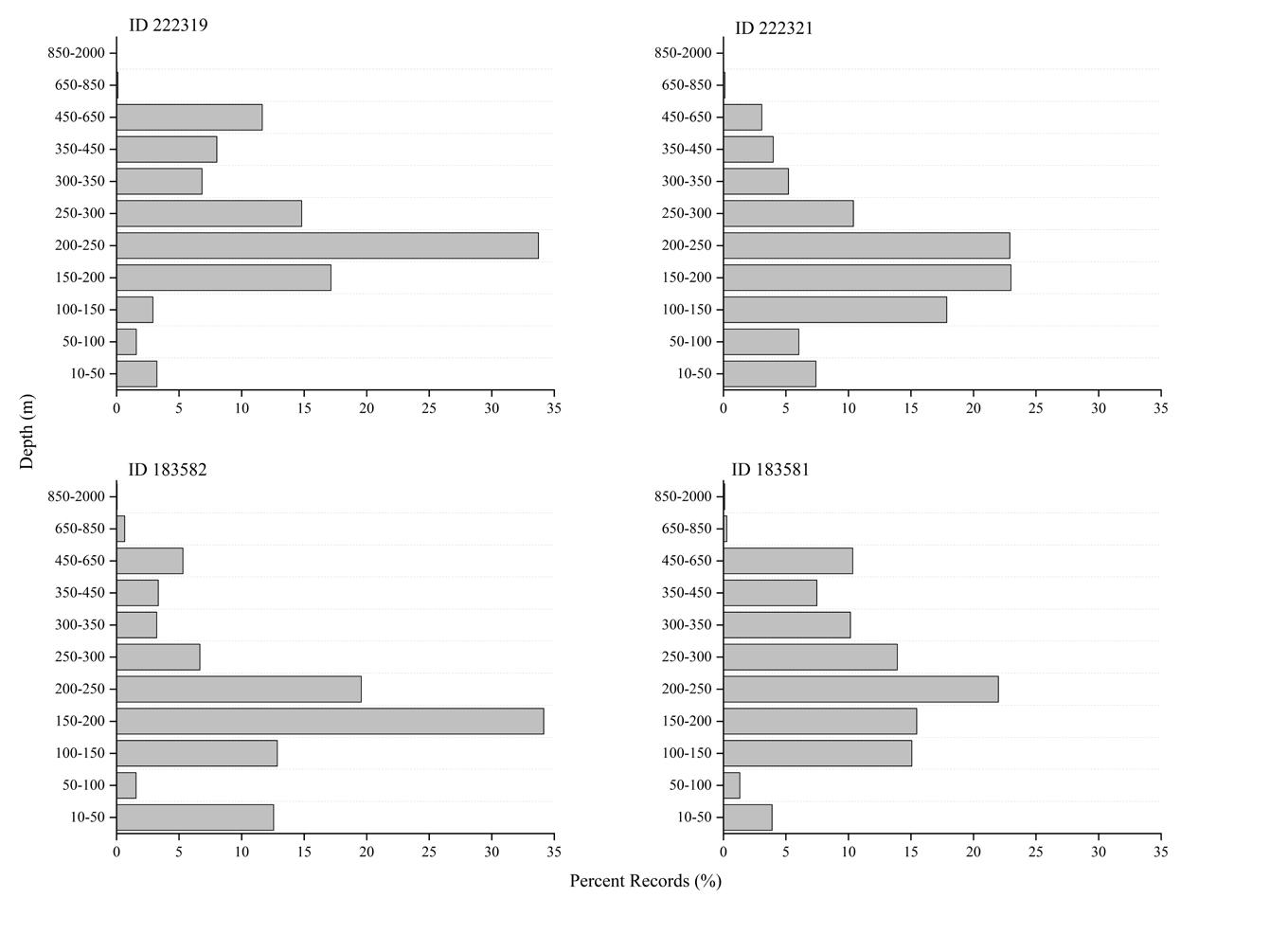
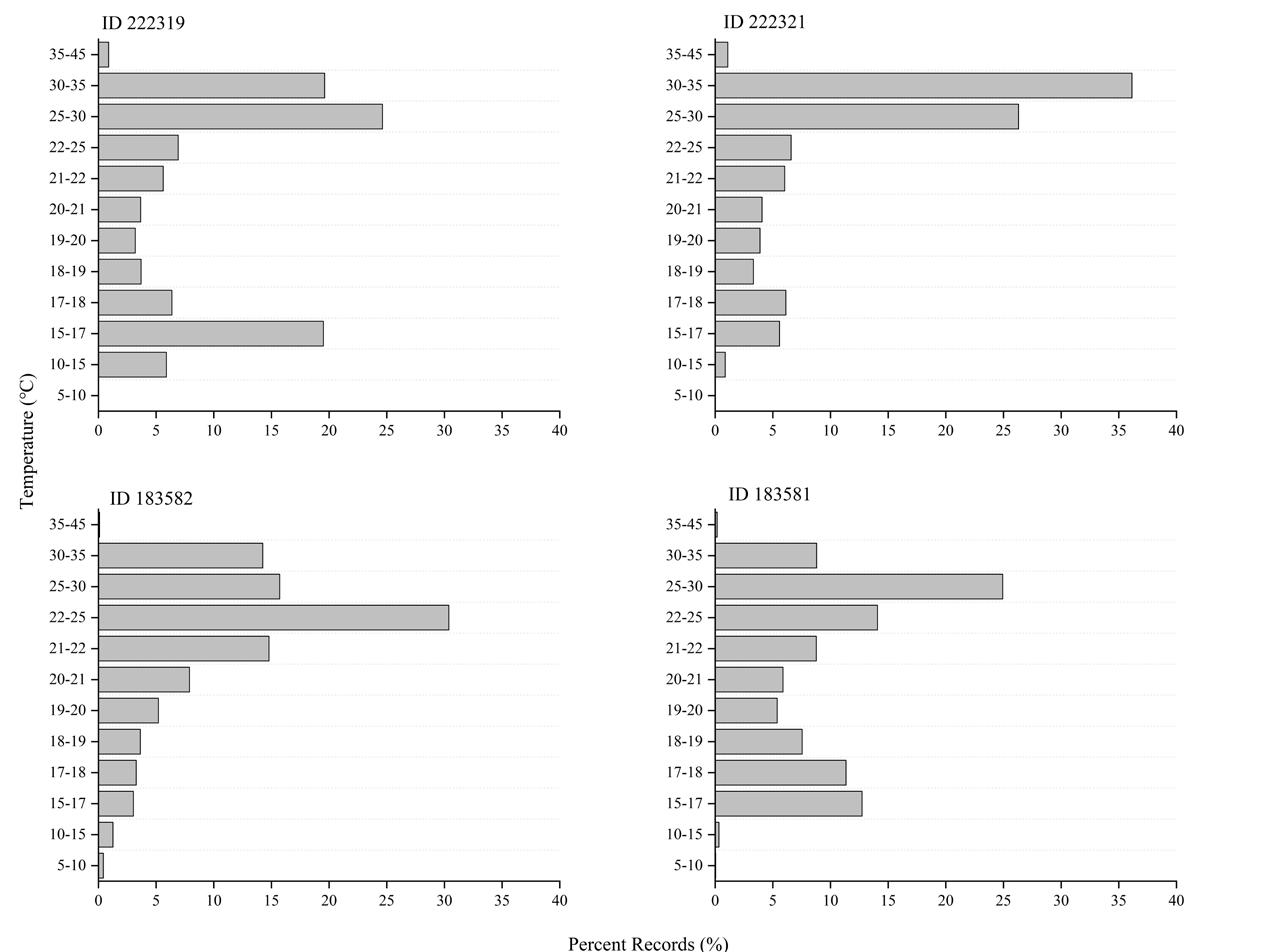
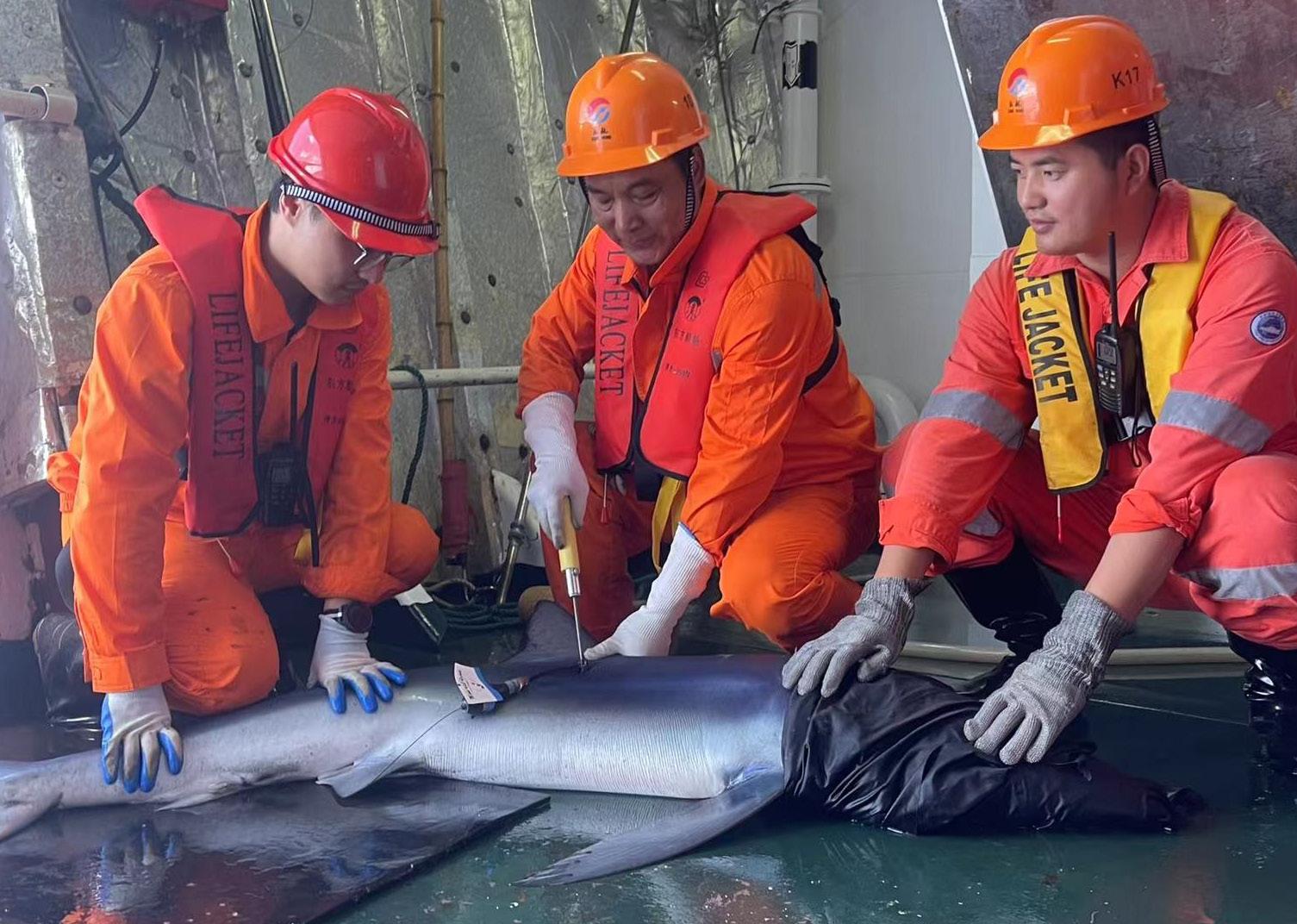
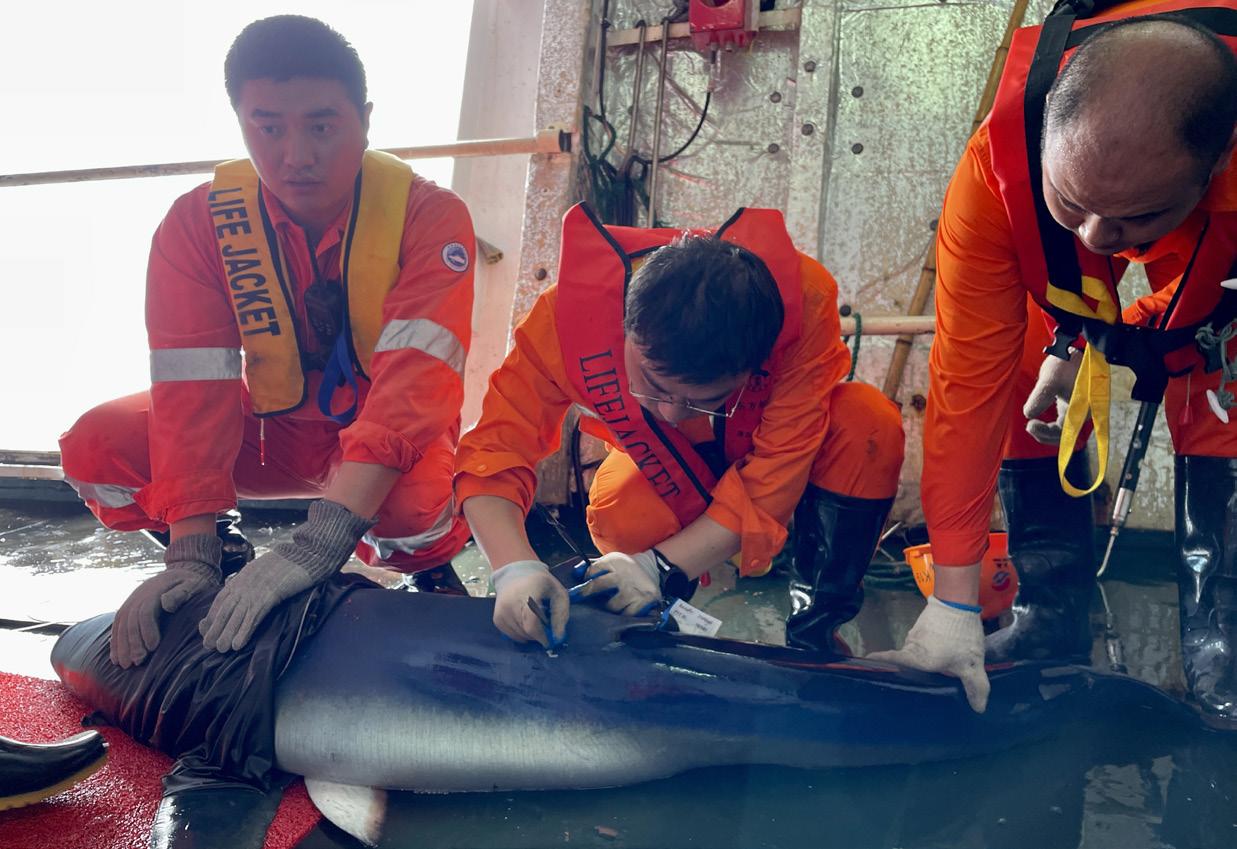
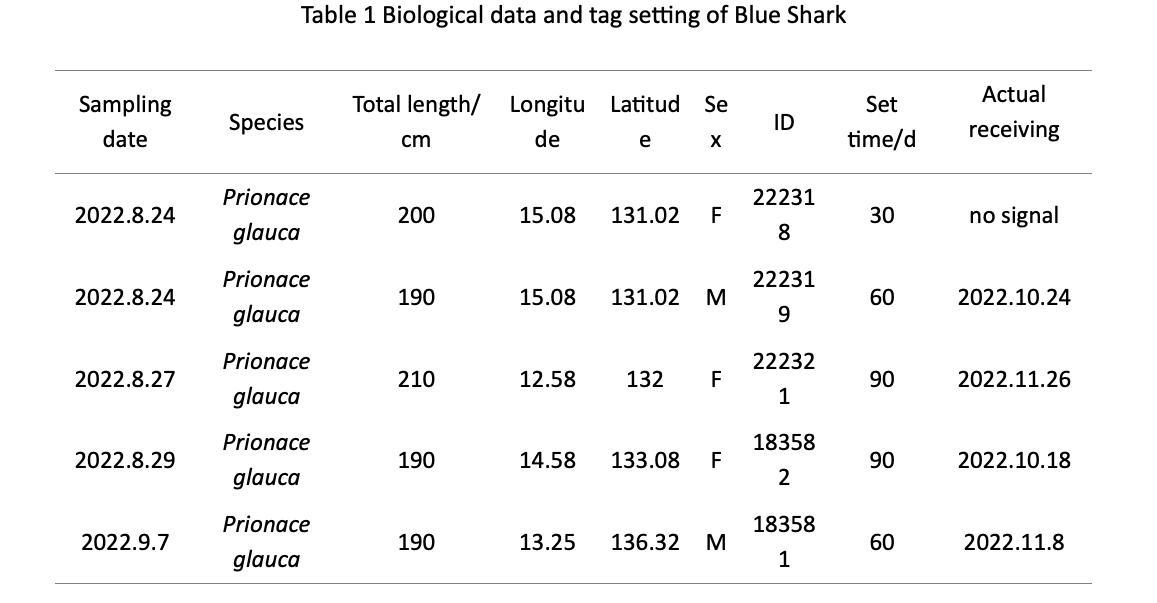
Photo by Y.L./SHOU.










